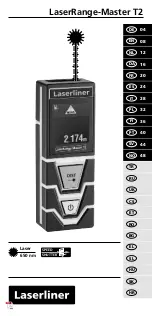
- -
23
5.
WARNINGS
1.
Temperature probes are not insulated from their external casing; be very careful not to come
into contact with live parts (above 48V). This could be extremely dangerous for the
instrument as well as for the operator, who could be electrocuted.
2.
Do not expose the probes to gases or liquids that could corrode the material of the sensor or the
probe itself. Clean the probe carefully after each measurement.
3.
Do not bend the probe connectors or force them upward or downward.
4.
Do not bend or force the contacts when inserting the probe connector into the instrument.
5.
Do not bend, deform or drop the probes, as this could cause irreparable damage.
6.
Always select the most suitable probe for your application.
7.
Do not use the temperature probes in presence of corrosive gases or liquids. The sensor
container is made of AISI 316 stainless steel, while the contact probe container is made from
AISI 316 stainless steel plus silver. Avoid contact between the probe surface and any sticky
surface or product that could corrode or damage it.
8.
Above 400°C and below –40°C, avoid violent blows or thermal shocks to Platinum temperature
probes as this could cause irreparable damage.
9.
To obtain reliable measurements, temperature variations that are too rapid must be avoided.
10.
Temperature probes for surface measurements (contact probes) must be held perpendicular
against the surface. Apply oil or heat-conductive paste between the surface and the probe in
order to improve contact and reduce reading time. Whatever you do, do not use water or solvent
for this purpose. A contact measurement is always very hard to perform. It has high levels of
uncertainty and depends on the ability of the operator.
11.
Temperature measurements on non-metal surfaces usually require a great deal of time due to the
low heat conductivity of non-metal materials.
12.
Avoid taking measurements in presence of high frequency sources, microwave ovens or large
magnetic fields; results may not be very reliable.
13.
Clean the probe carefully after use.
14.
The instrument is water resistant and IP67, but should not be immersed in water. The probe
connectors must be fitted with sealing gaskets. Should the instrument fall into the water, check
for any water infiltration. Gently handle the instrument in such a way as to prevent any water
infiltration from the connectors' side.












































